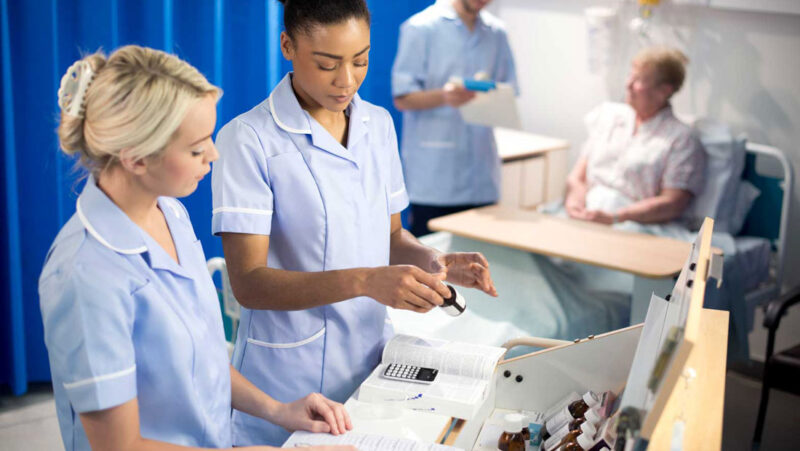Pharmacy continues to evolve within the Emergency Department (ED) whilst also becoming better established year by year as a speciality. The Emergency Care sector can be broadly divided into four areas: Pre-hospital; Emergency Department & Urgent Treatment; General Admissions; and, Same-Day Emergency Care. Pharmacy services in recent years have taken on vital roles within the sector including ambulance services, 24hr GP’ surgeries, virtual wards and EDs. The ground-breaking West Midlands Pilot study conducted between 2013-2014 followed by Health Education England’s national project in 2015, were pioneers in highlighting the positive impact of a pharmacist on the workflow and productivity of EDs.
If you’re interested in this area of practice, this guide will explain what it is like to work in the ED as a pharmacist.
Identifying your key stakeholders
The first thing you notice in ED is the number of staff wearing different uniforms. Knowing who your key stakeholders are is essential for several reasons:
- To learn from their expertise in order to improve your practice
- So that these stakeholders develop a better understanding of your contributions to the ED MDT and can potentially become endorsers of your practice
- To understand stakeholders’ motivational drivers so that you can adapt your service or practice to maximise collaborative working.
Stakeholders that could be key in developing an ED pharmacy service are:
- the ED pharmacy team, which may include a pharmacy technician and medicines management assistant
- Chief and Principal Pharmacists
- ED Matron
- ED Consultants
- Urgent Care Manager
- Advance Practitioners
- Trust QI Team
- Trust Finance team
- Pharmacists within SDEC and admission wards.
Know what you bring to the team
The role of an ED pharmacist is very much dependent on the local service model as there is some regional variability, but it could include the following:
- clinically reviewing and prescribing for priority patients
- writing or updating Trust guidelines and Patient Group Direction’s
- providing medicine-related advice
- processing outpatients prescriptions
- counselling patients
- training staff
- stock analysis and research.
To establish your identity and confidence as a pharmacist within the ED MDT, it is important that you know what you as a pharmacist can bring to the team. Here are some key benefits that a pharmacist can offer to an ED:
- Medicines optimisation: reduced polypharmacy; reduced prescribing errors; reduced patient harm secondary to medicines; reduced medicines wastage linked to departmental cost savings; facilitating local formulary-adherent prescribing
- Improving patients’ health literacy and medicines safety: aiding in the reduction of preventable medicine-related hospital admissions
- Patient discharge flow: an intermediary between secondary and primary care
- Medicines management: monitoring of stockholdings and storage; introduction of new formulary medication.
Clinical work and prioritisation
You are likely to be presented with an enormous amount of patient reviews each day. It is not only crucial that you manage your own expectations and understand that you may not be able to see every patient within your working day, but also have a prioritisation process in place to efficiently highlight critical patients that require an urgent clinical review.
On arrival, report to the nurse co-ordinator and identify any outstanding pharmacy issues or priority patients. Some Trusts use a patient tracking system called Symphony. This system identifies several parameters such as the length of stay of a patient within the department, patients who have been allocated a decision-to-admit, patients who have been referred to a speciality, the presenting complaint, patients with high Early Warning Scores, and patients’ comorbidities. All these can be used to help prioritisation. Electronic prescribing records can also be used to identify patients who have been prescribed critical medications and hence can also be prioritised.
Learning and development
There are no requirements to undergo national training schemes or accreditations to become a specialist ED pharmacist – it mostly involves learning on the job. However, there are several useful resources:
- TOXBASE
- RCEM Clinical Guidelines
- Resuscitation Council Adult and Paediatric ALS Guidelines.
Learning from other ED pharmacists by joining national networks such as the UKCPA Emergency Care community can be a great way to share experiences and provide support. It can foster collaboration which is particularly useful given the loud call for national research within the field.
Furthermore, developing soft skills such as interpersonal skills, resiliency, adaptability and emotional intelligence have also proved to be essential for a successful ED pharmacist.
The role of an ED pharmacist can have a significant positive impact on both patient care and service level performance. Hopefully, this article has given you an insight into how you could contribute to the fast-paced and exciting environment of an Emergency Department.
The opinions expressed in this article are those of the author. They do not purport to reflect the opinions or views of the UKCPA or its members. We encourage readers to follow links and references to primary research papers and guidance.
Competing interest statement:
The author declares: no support from any organisation for the submitted work; no financial relationships with any organisations that might have an interest in the submitted work in the previous three years; no other relationships or activities that could appear to have influenced the submitted work.




